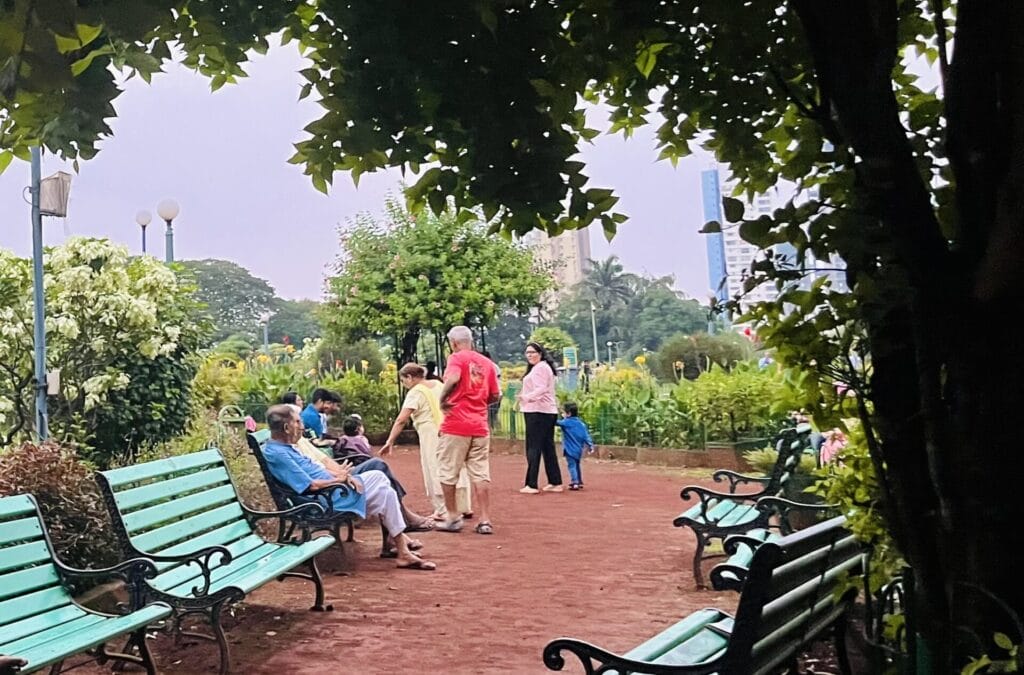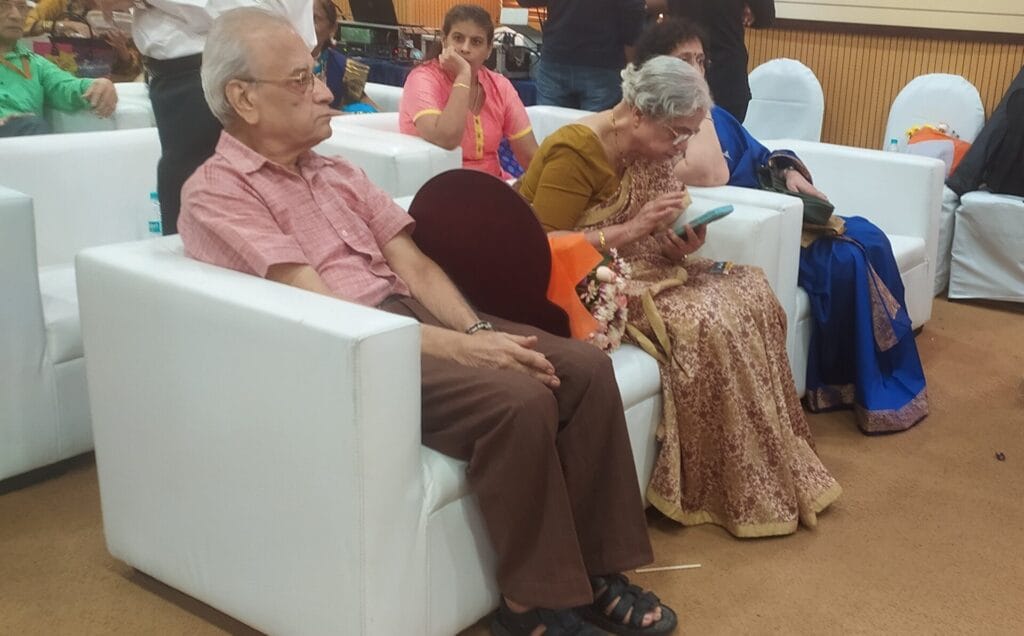The elderly population in India is rapidly rising with those above 60 years of age set to constitute 15% of the population by 2036 (22.7 crore), according to the India Ageing Report-2023 released by the United Nations Population Fund (UNFPA).
From constituting about 10.5% (14.9 crore) of the population in 2022, the population of senior citizens is likely to increase to 20% in 2050 (34.7 crore), thus throwing up new challenges related to their safety, well-being and health.
The report also stressed on the need to focus on policies and programmes to meet the needs of the elderly, especially older women since they are estimated to outlive their male counterparts.
In the wake of this background, Citizen Matters is doing a multi-part series, looking at the safety of the elderly, supporting infrastructure for the elderly, legal and community safeguards available for the rights of the elderly. We will also try to identify the gaps that need to be plugged to provide safety, security, care to our elderly.
In the first part, we identified the safety risks and measures taken by the Mumbai Police and in the second part, we looked at the availability and need for more old age homes in Mumbai.
In this third part, we look at how factoring needs of the elderly in urban planning will greatly enhance their well-being.
Struggles of daily life in a crowded and fast-paced city
Maushmi Khatu, 71 and her husband Suhas Khatu, 74 have to plan their daily routine meticulously to ensure a life of minimal discomfort. For example, she goes to the market only when it is not crowded. Walking on the streets is a daily challenge in her Chunabhatti neighbourhood, since the footpaths are occupied by hawkers and vehicles zoom past on the roads. She travels only during the non-peak traffic hours.
“One is forced to walk on roads because the footpaths are encroached. A slight loss of balance or tripping while walking on roads is enough to put you precariously close to moving vehicles,” she says.
Her bank is located on the first floor of a building, accessible only by climbing a flight of stairs, which is inconvenient for senior citizens.
Her children are settled in the United States and the United Kingdom. She has seen living conditions there and feels life is much better there. The attitude of the people here also puts her off. “Cars halt to let you cross the road in foreign countries, while here we are berated if we happen to come on crowded streets,” says Maushmi.
Many senior citizens decry that Mumbai is unfriendly for senior citizens. Routine tasks like walking on the streets or taking the train are difficult due to factors like encroachments and over-population. In fact, many Mumbaikars prefer to move to their native places after retirement, to escape the rush and crowds.
Against this backdrop making Mumbai age-friendly, would be a tall order for the authorities.
What is an age-friendly city?
The World Health Organisation (WHO) has devised the concept of age-friendly cities by incorporating changes in its design and policies in response to the challenges of rising population of the elderly coupled with rapid urbanisation.
The project was conceived in June 2005 at the opening session of the XVIII IAGG World Congress of Gerontology and Geriatrics in Rio de Janeiro, Brazil. The WHO Global Network for Age-friendly Cities and Communities in 2010 was established to connect cities, communities and organisations worldwide with the common vision of making their community a great place to grow old in.

This initiative focused on action at the local level to foster full participation of older people in community life and to promote healthy and active ageing.
“To be sustainable, cities must provide the structures and services to support their residents’ wellbeing and productivity. Older people in particular require supportive and enabling living environments to compensate for physical and social changes associated with ageing,” says the WHO guidelines here.
“Age-friendly city implies that a city’s planning — its landscape, buildings, transportation system, cultural and recreational mix, healthcare, libraries, housing and key services such as policing —need to be planned in a manner that they contribute to confident mobility, healthy behaviour, social participation and self-determination,” observes ex-bureaucrat Ramanath Jha here.
What are the parameters of an age-friendly city?
The core dimensions of age-friendliness identified by the WHO are equity, accessible physical environments, and inclusive social environments, according to Dr Vishnu Prabhir Poruthiyil, associate professor of policy studies at, IIT Bombay, which is supporting this initiative.
Eight factors have been identified to determine the age-friendliness of cities. These include access to community and health care, housing, transportation, outdoor spaces and buildings, respect and social inclusion, civic participation and employment.
Read more: International Day of the Older Persons: Navigating life as elderly in Mumbai
How age-friendly is Mumbai?
Mumbai has not yet been included in any of the global indices that compares cities on age-friendliness. A preliminary evaluation suggests that Mumbai would rank relatively low. “Even reasonably healthy persons struggle to use public transportation and move through public spaces. Lack of affordable housing aggravates the challenges for retirees, particularly the majority of older persons who are living on meagre or no pensions,” observes Dr Vishnu.
He adds, “Addressing loneliness and developing positive attitudes towards older persons among younger citizens are bigger challenges. Involving older persons to engage in socio-cultural activities, providing up-to-date information on issues that matter to them, affordable health, and gainful employment for older persons are not even a priority on any political agendas”.
What is the role of BMC?
Dr. Vishnu says, “Though the BMC is progressive in having adopted a policy for senior citizens in 2013, the intent has failed to trickle down within its bureaucracy, where it matters. Considering the sheer size of Mumbai, it makes more sense to galvanise and trigger micro transformations at the local ward level in coordination with various stakeholders like older persons’ associations, care givers, political representatives and NGO’s to bring about systemic changes.” The role of municipal governments in transforming cities into age-friendly spaces is very crucial, he says.
What are the challenges before BMC?
Considering Mumbai’s population and space crunch, attaining age-friendliness is a major challenge, admit officials of the Brihanmumbai Municipal Corporation (BMC).
At a round-table on “Ageing and Urban Social Health” hosted by the Indian Institute of Technology on September 13, 2023, the director (planning) of the BMC, Prachi Jambhekar cited high population density and limited land resources coupled with social and economic crises as major challenges that hindered comprehensive geriatric care in Mumbai.
Instead of being overwhelmed by the huge challenges ahead, the BMC has decided to focus on attainable goals like setting up day care centers for the elderly, she said.
BMC’s day care centers for elderly
The BMC is setting up day care centers for the elderly to become an ‘age-friendly’ city. Equipped with basic recreational and medical facilities, these centers are meant to help the elderly cope with social isolation and loneliness.
These centers will be operational only during day hours between 9 am – 7 pm, and will get special BEST bus services connectivity.

As of now, the BMC runs one center in the city at Girgaum and is in the process of setting another one at Andheri. Even this concept is constrained due to lack of space.
“Our centers are located within BMC facilities. But we are struggling to expand due to lack of spaces. Since elderly need to move around comfortably, the center has to be spacious. If it is in a flat, then there must be lift service available,” an official explained.
Earlier, the BMC had planned recreational centers within public gardens but no more. It is now setting up centers within residential zones, so that people can access it through the year.
The BMC is also exploring the framework followed by Bristol for insights.
Are any other Indian cities age-friendly?
Initially New Delhi was part of the cities, which were surveyed to determine their age-friendliness. A basic online search reveals that cities like New Delhi, Kochi and Kolkata, are working towards it.
Respecting the elderly
Beyond the scope of city planning and execution, the most crucial aspect in any city is the role played by its citizens. “Respect and consideration for the old is an age-old custom in India and should continue — not only at home — but also on the streets, public and commercial spaces, at employment and care settings,” writes Ramanath Jha in the report mentioned earlier.
Maushmi says that connection with people in her neighbourhood keeps her in Mumbai. “Despite the best facilities, the major issue abroad is social isolation. Our connection with people here, from the shopkeepers to our community, is what keeps us going in Mumbai,” she says.
Helplines for the safety of the elderly
Senior citizens should be encouraged to reach out for help – be it medical or otherwise. When they face situations that involve physical violence or pose a risk to their lives, they should contact any of the following helplines.
National helpline – 14567
Mumbai police helpline – 1090 (Senior Citizens may directly call 1090 to register themselves)
While the national helpline is meant for information on facilities available for the aged, guidance on issues like legal or pension-related, or counselling and emotional support, the Mumbai police helpline is to seek redressal for distress or abuse.
Medical emergencies are also handled in co-ordination with state health helpline 108.
Elders can also apply for registration on https://elderline.dosje.gov.in, mumbaipolice.gov.in or through www.hamarisuraksha.com